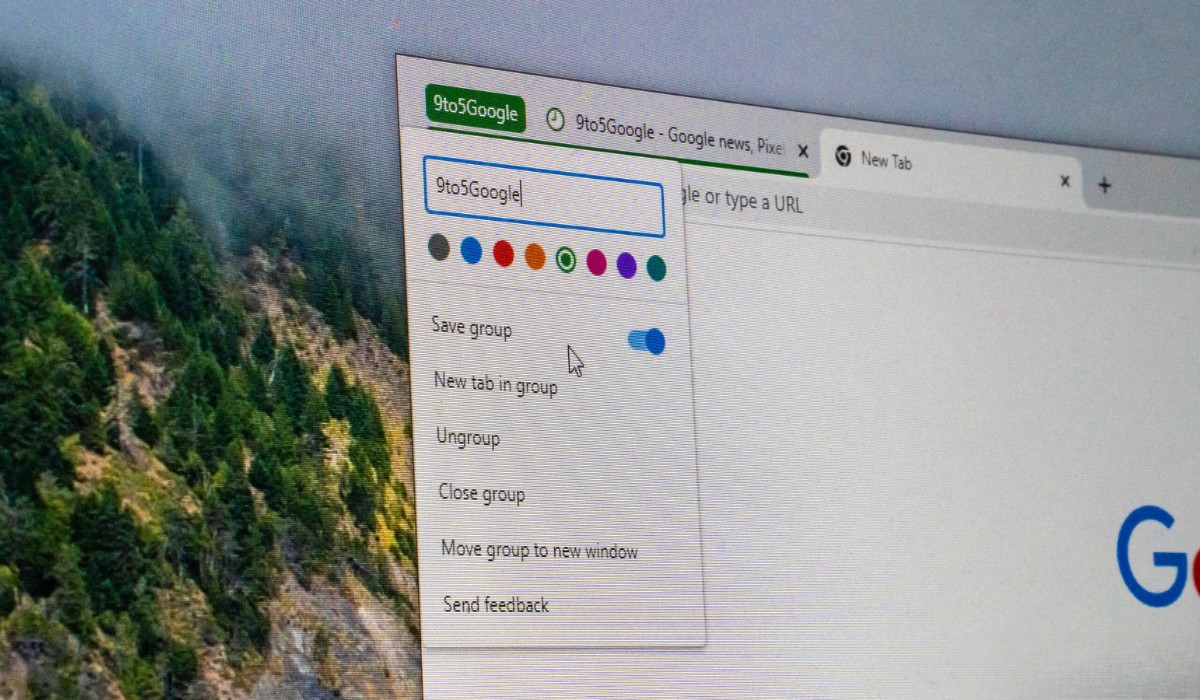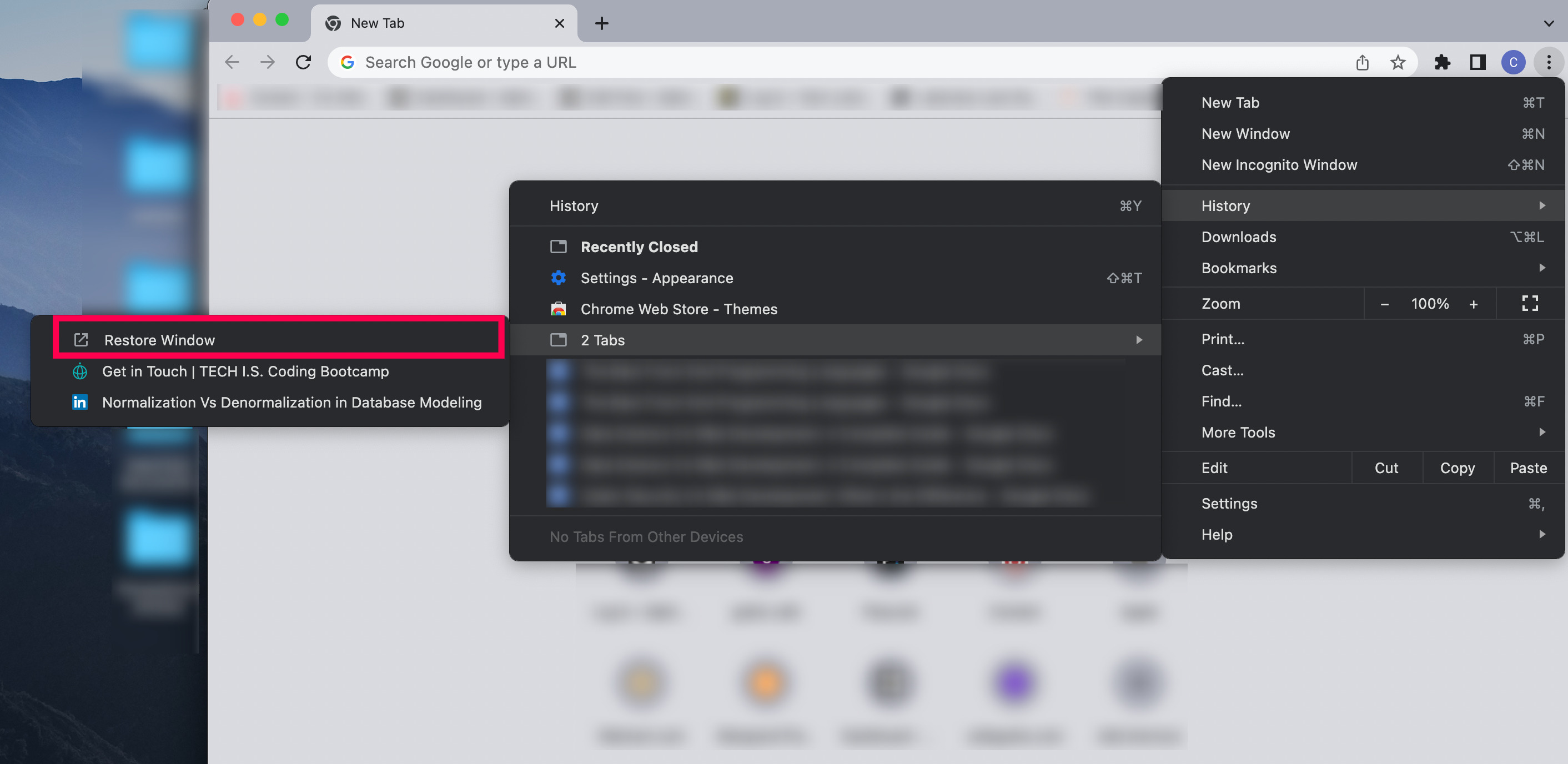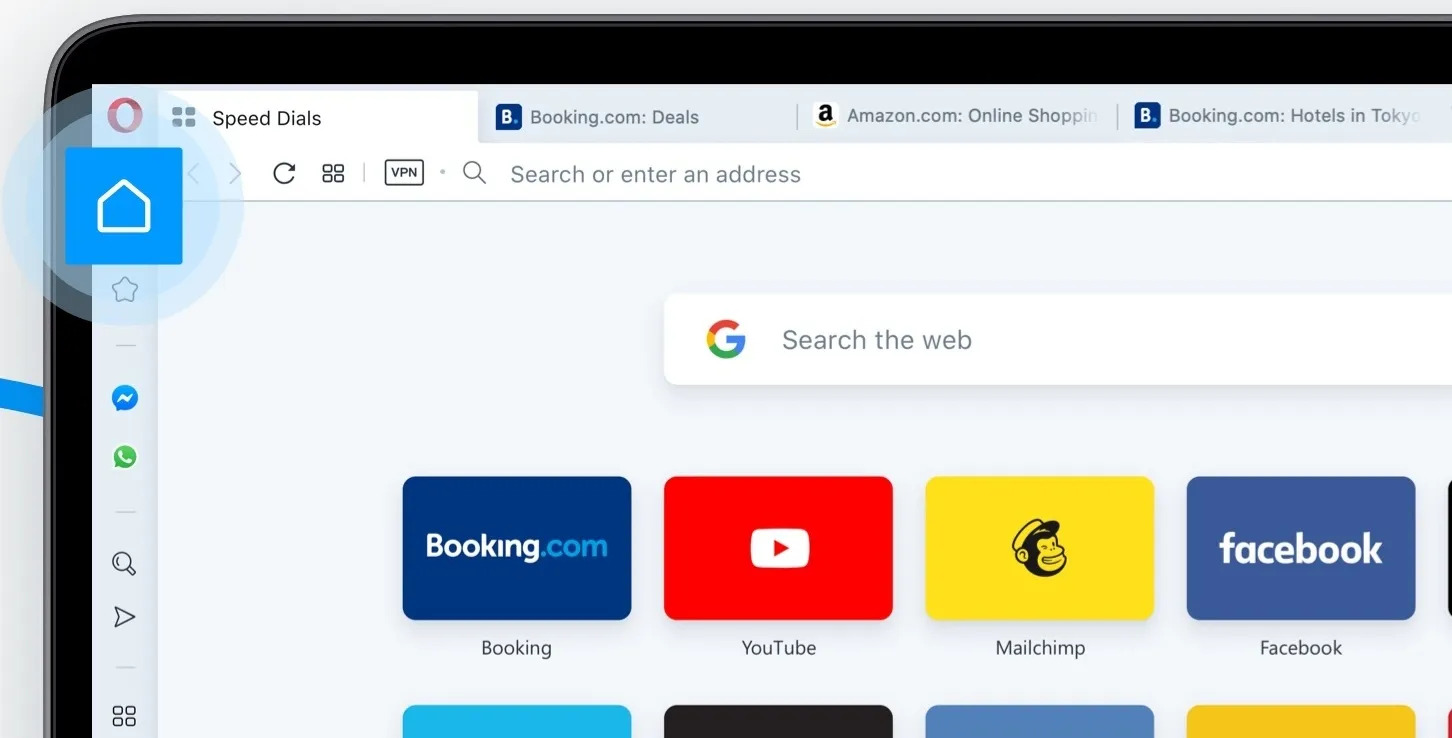Introduction
Google Chrome is a versatile and feature-rich web browser that offers a seamless browsing experience. One of its convenient features is the ability to save tabs when closing the browser, ensuring that you can pick up right where you left off. This can be incredibly useful for individuals who frequently work with multiple tabs and want to resume their browsing session without having to manually reopen each tab.
In this article, we will explore the simple steps to configure Google Chrome to save tabs when closing the browser. By following these steps, you can streamline your browsing experience and eliminate the need to manually restore your tabs each time you launch Chrome.
Whether you're a student conducting research across multiple tabs, a professional managing various work-related websites, or simply an avid internet user with a multitude of interests, knowing how to make Google Chrome save tabs when closing can significantly enhance your productivity and convenience. With just a few clicks, you can ensure that your browsing session is seamlessly preserved, allowing you to effortlessly continue your online activities without interruption.
Now, let's delve into the step-by-step process of configuring Google Chrome to retain your tabs when closing the browser. By the end of this guide, you'll have the knowledge and confidence to optimize your browsing experience and make the most of Google Chrome's tab-saving functionality.
Step 1: Open Google Chrome
To begin the process of configuring Google Chrome to save tabs when closing the browser, the first step is to open the Google Chrome web browser on your computer or mobile device. You can easily locate the Google Chrome icon on your desktop, taskbar, or applications folder and launch the browser with a simple click or tap.
Upon opening Google Chrome, you will be greeted by the familiar interface that showcases the omnibox, which serves as both the address bar and search bar. This versatile feature allows you to enter website addresses, perform web searches, and access various browser functions with ease.
As the browser loads, you may notice the quick access tiles that display your most visited websites, providing convenient shortcuts to frequently accessed web pages. Additionally, the customizable nature of Google Chrome enables you to personalize your browsing experience by organizing bookmarks, installing extensions, and customizing the browser's appearance through themes and settings.
Once Google Chrome is open, you are ready to proceed to the next step in the process of enabling the tab-saving functionality. With the browser at your fingertips, you can seamlessly navigate to the necessary settings and make the desired adjustments to ensure that your tabs are preserved when closing the browser.
Opening Google Chrome marks the initial stage in this straightforward process, setting the stage for a seamless and efficient experience as you delve into the subsequent steps. With the browser launched and ready for action, you are well-positioned to embark on the journey of optimizing your browsing experience and harnessing the full potential of Google Chrome's tab-saving capabilities.
Step 2: Click on the three-dot menu
Upon opening Google Chrome, you will notice the three-dot menu icon located at the top-right corner of the browser window. This icon serves as a gateway to a plethora of essential browser functions and settings, allowing users to access a wide range of options with a simple click. The three-dot menu, also known as the "More" or "Customize and control Google Chrome" menu, is a central hub for managing various aspects of the browser, including tabs, settings, extensions, and more.
When you click on the three-dot menu, a dropdown menu will appear, presenting a comprehensive array of options that empower you to customize and optimize your browsing experience. This menu is designed to provide quick and convenient access to essential features, making it a pivotal element of the Google Chrome interface.
Upon clicking the three-dot menu, you will be greeted by a menu that includes options such as "New tab," "New window," "History," "Downloads," "Bookmarks," "Zoom," "Settings," "Help," and "Exit." These options are strategically organized to facilitate seamless navigation and efficient access to key browser functions.
Furthermore, the three-dot menu grants users access to the "Settings" option, which serves as the gateway to a wealth of customization and configuration possibilities. By clicking on "Settings" within the three-dot menu, you can delve into the heart of Google Chrome's functionality, enabling you to tailor the browser to your specific preferences and requirements.
In addition to accessing settings, the three-dot menu also provides a direct pathway to essential tools and features, such as the "Extensions" menu, which allows users to manage and customize their installed browser extensions with ease. This streamlined access to extensions empowers users to enhance their browsing experience by leveraging a diverse range of add-ons and tools.
The three-dot menu is a cornerstone of the Google Chrome interface, offering a user-friendly and intuitive means of accessing vital browser functions and settings. By clicking on this menu, users can effortlessly navigate through the browser's features, enabling them to make adjustments, access tools, and customize their browsing environment to suit their individual needs.
With the three-dot menu serving as a gateway to a wealth of essential options and settings, it plays a pivotal role in the process of configuring Google Chrome to save tabs when closing the browser. By clicking on this central menu, users can seamlessly progress to the next steps in the process, setting the stage for a streamlined and efficient experience as they harness the full potential of Google Chrome's tab-saving capabilities.
Step 3: Select "Settings"
After clicking on the three-dot menu in the top-right corner of the Google Chrome browser window, a dropdown menu will appear, presenting a variety of options. Among these options, you will find "Settings," which is a pivotal entry point for customizing and configuring various aspects of the browser.
Selecting "Settings" from the dropdown menu will seamlessly transition you to the dedicated settings interface within Google Chrome. This interface serves as a central hub for managing an extensive range of browser features, preferences, and configurations. Upon entering the settings interface, you will be greeted by a comprehensive array of categories and options, each designed to empower users to tailor their browsing experience to their specific needs and preferences.
Within the settings interface, you will encounter a diverse range of sections, including "Appearance," "Search engine," "Privacy and security," "Site settings," "Advanced," and more. These sections are strategically organized to facilitate intuitive navigation and efficient access to the various settings and configurations available within Google Chrome.
Furthermore, the settings interface provides users with granular control over their browsing experience, allowing them to adjust preferences related to startup behavior, homepage settings, default search engine, privacy and security options, content settings, and more. This level of customization empowers users to personalize their browsing environment and ensure that it aligns with their individual requirements and preferences.
In addition to the standard settings available within the interface, users can explore advanced configurations by accessing the "Advanced" section, which offers a deeper level of control over browser functionality. Within the "Advanced" section, users can delve into a wide range of options, including accessibility settings, system configurations, downloads, printing, and more, providing a comprehensive toolkit for optimizing the browsing experience.
By selecting "Settings" from the three-dot menu, users gain access to a wealth of customization possibilities, enabling them to fine-tune their browsing environment and make the necessary adjustments to ensure that their tabs are saved when closing the browser. This pivotal step sets the stage for seamlessly progressing through the subsequent steps, ultimately leading to a streamlined and efficient browsing experience within Google Chrome.
Step 4: Click on "On startup"
Upon entering the settings interface in Google Chrome, the next crucial step in configuring the browser to save tabs when closing is to navigate to the "On startup" section. This section holds significant importance as it directly influences the browser's behavior when it is launched, allowing users to define their preferred startup settings and ensure a seamless continuation of their browsing sessions.
Clicking on "On startup" within the settings interface presents users with a range of options that dictate how Google Chrome behaves when it is opened. This includes the ability to set the browser to open a specific set of pages or continue from where the user left off. By selecting the latter option, users can ensure that their tabs are preserved when the browser is closed, enabling them to effortlessly resume their browsing activities without the need to manually reopen individual tabs.
The "On startup" section empowers users to tailor their browsing experience to align with their preferences, ensuring that Google Chrome seamlessly adapts to their usage patterns. This level of customization is instrumental in optimizing productivity and convenience, as it eliminates the need to reconstruct browsing sessions each time the browser is launched.
Furthermore, the "On startup" settings in Google Chrome provide users with the flexibility to define their preferred homepage, enabling them to designate a specific page or set of pages to load upon launching the browser. This feature allows for a personalized and efficient browsing experience, ensuring that users are greeted by their preferred content as soon as they open Google Chrome.
By clicking on "On startup" and making the appropriate selections, users can effortlessly configure Google Chrome to save tabs when closing, thereby streamlining their browsing experience and eliminating the inconvenience of manually restoring tabs. This pivotal step sets the stage for a seamless continuation of browsing sessions, empowering users to make the most of Google Chrome's tab-saving capabilities and enhancing their overall productivity and convenience.
In summary, the "On startup" section within the settings interface of Google Chrome serves as a gateway to defining crucial browser behavior, allowing users to ensure that their tabs are preserved when closing the browser. By navigating to this section and making the necessary selections, users can seamlessly optimize their browsing experience, setting the stage for a streamlined and efficient continuation of their online activities within Google Chrome.
Step 5: Choose "Continue where you left off"
Upon reaching the "On startup" section within the settings interface of Google Chrome, the pivotal step of choosing "Continue where you left off" presents itself as a fundamental decision that directly influences the browser's behavior. By selecting this option, users effectively instruct Google Chrome to preserve their tabs when the browser is closed, ensuring a seamless continuation of their browsing session upon relaunch.
The "Continue where you left off" setting serves as a powerful tool for streamlining the browsing experience, eliminating the need to manually reopen individual tabs or reconstruct browsing sessions. This feature is particularly beneficial for individuals who frequently work with multiple tabs, such as students conducting research, professionals managing various work-related websites, or avid internet users with diverse interests.
By choosing "Continue where you left off," users empower Google Chrome to adapt to their browsing habits, ensuring that their tabs are seamlessly retained when the browser is closed. This level of convenience not only enhances productivity but also reduces the potential for disruption, allowing users to effortlessly pick up where they left off without the hassle of recreating their browsing environment.
Furthermore, the "Continue where you left off" setting aligns with Google Chrome's user-centric approach, providing a personalized and efficient browsing experience. By preserving tabs and maintaining the continuity of browsing sessions, users can navigate seamlessly between tasks, projects, or areas of interest, without the burden of managing tab restoration manually.
This feature underscores Google Chrome's commitment to empowering users with intuitive and practical tools, ultimately enhancing their overall browsing experience. By choosing "Continue where you left off," users can leverage the full potential of Google Chrome's tab-saving capabilities, ensuring a seamless and uninterrupted browsing experience tailored to their individual needs and preferences.
In summary, the act of choosing "Continue where you left off" within the "On startup" section of Google Chrome's settings interface represents a pivotal step in configuring the browser to save tabs when closing. This decision directly influences the browser's behavior, empowering users to seamlessly resume their browsing sessions without the need to manually restore tabs, ultimately enhancing productivity and convenience within the Google Chrome ecosystem.
Step 6: Close the Settings tab
After completing the essential configurations within the settings interface of Google Chrome, the final step involves closing the Settings tab to solidify the adjustments made. Once the necessary selections have been made within the settings interface, users can seamlessly transition to the next phase of their browsing experience by closing the tab, thereby ensuring that the configured settings take effect.
Closing the Settings tab signifies the culmination of the customization process, marking the transition from the settings interface back to the main browsing environment within Google Chrome. This simple yet crucial action serves as the gateway to implementing the configured preferences, allowing users to seamlessly integrate the chosen settings into their browsing experience.
By closing the Settings tab, users effectively signal the completion of the configuration process, indicating that the adjustments made within the settings interface are ready to be applied. This action paves the way for a streamlined and efficient continuation of the browsing session, empowering users to benefit from the tailored settings and preferences that have been carefully selected.
Furthermore, closing the Settings tab represents a seamless transition back to the primary browsing interface of Google Chrome, enabling users to resume their online activities with the confidence that their preferred settings are in place. This transition reinforces the user's agency in customizing their browsing environment, ensuring that Google Chrome aligns with their individual needs and preferences.
In essence, closing the Settings tab serves as the final step in the process of configuring Google Chrome to save tabs when closing the browser. This action signifies the successful implementation of the chosen settings, setting the stage for a seamless and personalized browsing experience tailored to the user's specific requirements.
With the Settings tab closed, users can confidently navigate through their tabs, knowing that their browsing sessions will be preserved when the browser is closed. This simple yet pivotal step encapsulates the user's control over their browsing environment, ensuring that Google Chrome seamlessly adapts to their preferences and usage patterns.
In summary, closing the Settings tab represents the culmination of the configuration process, marking the successful implementation of tailored settings within Google Chrome. This action empowers users to seamlessly transition back to their browsing activities, confident in the knowledge that their tabs will be saved when closing the browser, ultimately enhancing their productivity and convenience within the Google Chrome ecosystem.

























